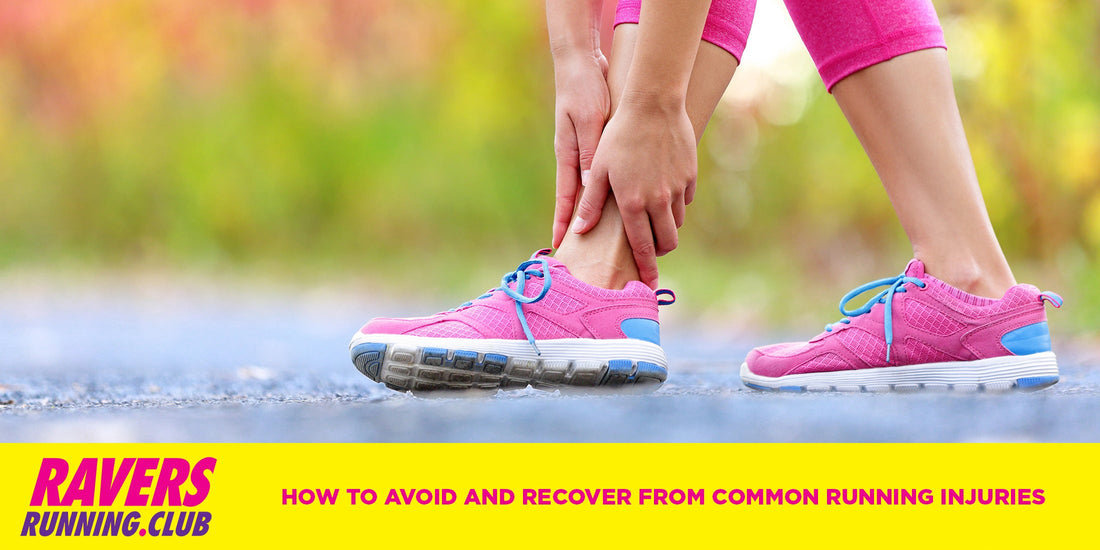
How to Avoid and Recover from Common Running Injuries
Share
Stay safe and keep running strong! Learn how to prevent common running injuries and recover effectively if they do occur.
Introduction
Running is an incredible way to stay fit and boost your mental health, but it also comes with the risk of injury, especially if you’re not careful. Whether you’re a beginner or a seasoned runner, it’s essential to know how to avoid common injuries like shin splints, runner’s knee, and plantar fasciitis. And if you do get injured, understanding how to recover properly is just as important.
In this guide, we’ll discuss how to prevent and recover from the most frequent running injuries.
1. Shin Splints
What It Is: Pain along the front or inside of the shin, often caused by overuse or improper footwear.
Prevention Tips:
- Gradually increase your mileage and avoid sudden jumps in distance or intensity.
- Wear proper running shoes with adequate support and cushioning.
- Incorporate strength training for your lower legs and core to improve stability.
Recovery Tips:
- Rest and reduce your running mileage temporarily.
- Apply ice to the affected area for 15-20 minutes to reduce inflammation.
- Consider switching to low-impact activities like swimming or cycling until the pain subsides.
2. Runner’s Knee (Patellofemoral Pain Syndrome)
What It Is: Pain around the kneecap, often caused by repetitive stress and weak thigh muscles.
Prevention Tips:
- Strengthen your quadriceps and glutes to support your knees.
- Focus on proper running form and avoid overstriding.
- Choose running surfaces that minimise impact, like dirt trails or grass.
Recovery Tips:
- Reduce your running intensity and consider cross-training with low-impact activities.
- Use a foam roller to release tightness in your IT band and quads.
- Strengthen your leg muscles gradually before resuming your regular running routine.
3. Plantar Fasciitis
What It Is: Pain along the bottom of the foot, usually near the heel, caused by inflammation of the plantar fascia.
Prevention Tips:
- Invest in supportive running shoes that cushion the arch of your foot.
- Stretch your calves and feet regularly, especially after running.
- Avoid running on very hard surfaces whenever possible.
Recovery Tips:
- Rest and consider using a foot splint at night to stretch the plantar fascia.
- Roll your foot over a frozen water bottle or massage ball to ease pain.
- Gradually reintroduce running, focusing on shorter, less intense runs.
4. Achilles Tendinitis
What It Is: Pain and stiffness along the Achilles tendon, often caused by overuse or tight calf muscles.
Prevention Tips:
- Stretch and strengthen your calves to take pressure off the Achilles tendon.
- Avoid running on steep hills too frequently, as it can strain the tendon.
- Increase your mileage slowly and avoid overtraining.
Recovery Tips:
- Rest and use ice to reduce swelling.
- Perform eccentric heel drops (with guidance from a physiotherapist) to strengthen the tendon.
- Wear supportive shoes and consider orthotics if necessary.
5. IT Band Syndrome
What It Is: Pain on the outside of the knee caused by tightness in the iliotibial band.
Prevention Tips:
- Foam roll your IT band and surrounding muscles regularly to keep them loose.
- Incorporate hip-strengthening exercises to improve stability.
- Vary your running routes to avoid overloading one side of your body.
Recovery Tips:
- Rest and use ice to reduce inflammation.
- Stretch and strengthen your hips and glutes.
- Consult a physiotherapist if the pain persists to develop a tailored recovery plan.
General Injury Prevention Tips
- Warm up before every run and cool down afterward with dynamic and static stretches.
- Cross-train to build strength and avoid overuse injuries.
- Listen to your body and don’t ignore early signs of pain or discomfort.
- Make sure to get enough rest and prioritise recovery days to allow your muscles to heal.
Conclusion
Preventing injuries is all about being proactive with your training and listening to your body’s needs. But if an injury does occur, remember to give yourself the time and care you need to heal properly. Your future running self will thank you!
By taking the right steps to avoid and recover from injuries, you’ll be able to keep running strong and enjoy every mile.
Stay tuned for more running tips and advice on our blogs and follow us on social media!
